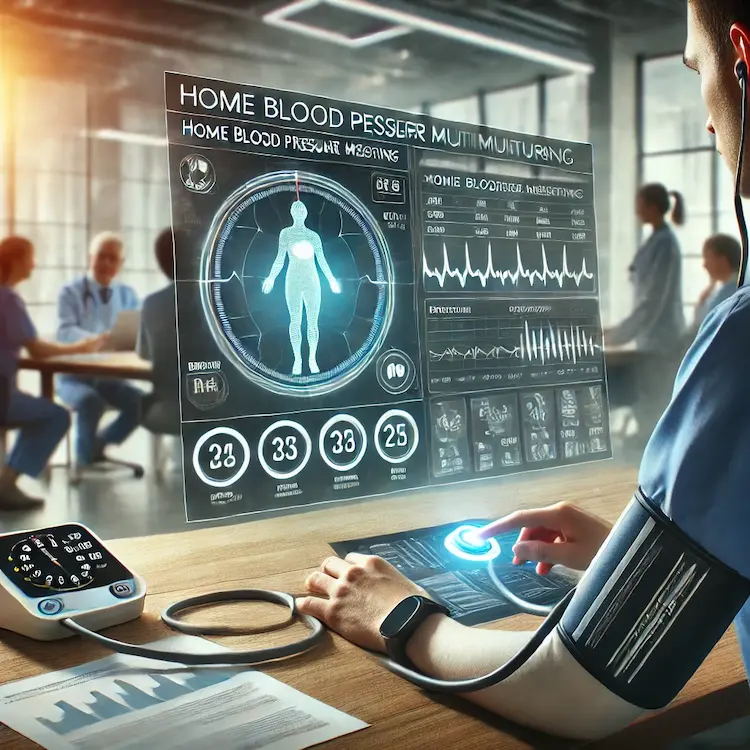Home blood pressure monitoring (HBPM) has become an integral component in clinical trials, offering a comprehensive view of a participant’s blood pressure profile outside the clinical environment. This method not only enhances the accuracy of data collection but also provides insights into the real-world efficacy of interventions.
Importance of Home Blood Pressure Monitoring in Clinical Trials
Traditionally, blood pressure measurements were confined to clinical settings, which often led to phenomena like white-coat hypertension—elevated readings due to the clinical environment. HBPM mitigates this by allowing participants to measure their blood pressure in familiar surroundings, leading to more accurate and representative data. This approach is particularly valuable in clinical trials as it:
- Enhances Data Accuracy: By capturing multiple readings over time, HBPM provides a comprehensive blood pressure profile, reducing variability and offering a clearer picture of intervention effects.
- Improves Participant Compliance: The convenience of at-home monitoring encourages participants to adhere more closely to study protocols, ensuring consistent data collection.
- Detects Masked Hypertension: Some individuals exhibit normal blood pressure in clinical settings but elevated levels elsewhere. HBPM helps identify such cases, ensuring they are appropriately addressed in analyses.

Methods and Tools for Home Blood Pressure Monitoring
Several methods and tools are employed in HBPM, each contributing uniquely to data collection in clinical trials:
- Digital Monitors: These devices automatically inflate the cuff and display readings, making them user-friendly and suitable for most participants.
- Ambulatory Blood Pressure Monitoring (ABPM): ABPM devices measure blood pressure at regular intervals over 24 hours, providing detailed insights into blood pressure patterns, including nocturnal hypertension.
- Telemonitoring Systems: Integrating digital monitors with telehealth platforms allows real-time data transmission to researchers, facilitating prompt interventions and more dynamic study designs.
In the context of the Philippines, adopting these tools can significantly enhance the understanding of hypertension patterns among Filipinos. For instance, the PRESYON studies have documented a rise in hypertension prevalence from 22% in the 1990s to 37% in 2021. Implementing HBPM in clinical trials can provide more granular data, aiding in the development of targeted interventions.
Potential Health and Societal Impacts
The integration of HBPM in clinical trials holds several potential benefits:
- Early Detection and Management: Regular monitoring facilitates the early identification of hypertension, allowing for timely interventions and reducing the risk of complications such as stroke or heart disease.
- Empowerment Through Self-Management: Participants become active contributors to their health management, fostering a sense of responsibility and encouraging adherence to treatment regimens.
- Economic Benefits: Early detection and management can lead to reduced healthcare costs by preventing severe hypertension-related complications, which are often expensive to treat.
In the Philippines, where hypertension awareness remains low—with control achieved in less than half of treated patients—HBPM can play a crucial role in bridging this gap.

Practical Advice for Implementing HBPM in the Philippines
For effective HBPM implementation in clinical trials within the Philippines:
- Device Selection: Choose validated and culturally appropriate devices that are user-friendly and reliable.
- Participant Education: Provide comprehensive training on proper measurement techniques, emphasizing the importance of consistency and accuracy.
- Data Management: Establish robust systems for data collection, storage, and analysis, ensuring participant confidentiality and data integrity.
- Cultural Sensitivity: Tailor interventions to align with local customs and beliefs, enhancing participant engagement and compliance.
By adhering to these steps, researchers can ensure the successful integration of HBPM into clinical trials, ultimately contributing to better health outcomes in the Filipino population.
Conclusion
Home blood pressure monitoring is a valuable tool in clinical trials, offering accurate, real-world data that enhances our understanding of hypertension and the effectiveness of interventions. In the Philippines, where hypertension prevalence is rising, HBPM can play a pivotal role in improving health outcomes through early detection, better management, and informed policy-making.
Key Takeaways:
- HBPM provides accurate and comprehensive blood pressure data, reducing the impact of white-coat hypertension.
- The method enhances participant compliance and empowers individuals in managing their health.
- Implementing HBPM in the Philippines can aid in early detection and management of hypertension, addressing the rising prevalence and associated health risks.
Actionable Recommendations:
- Healthcare providers and researchers should consider incorporating HBPM into clinical trials and routine practice to obtain more accurate blood pressure measurements.
- Educational initiatives are essential to train participants on proper HBPM techniques, ensuring data accuracy and reliability.
- Policymakers should support the integration of HBPM into healthcare strategies to enhance hypertension management and reduce the burden of cardiovascular diseases in the Philippines.

